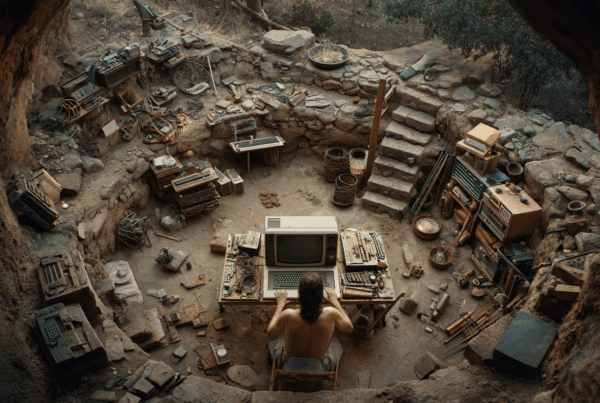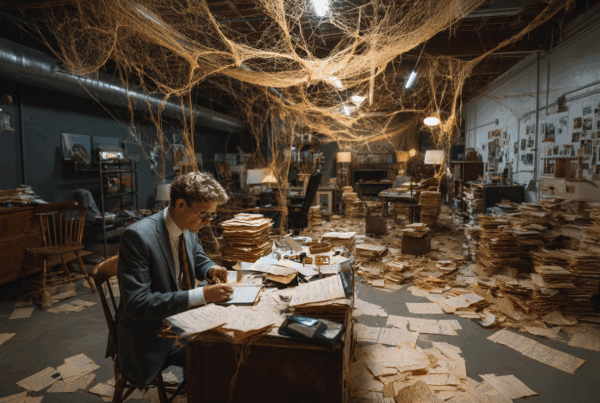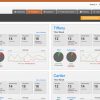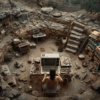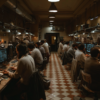Opportunity is everywhere. But most people never see it. The doomsday machine is so loud!
When I created Giant Leaps Learning, we taught students how to spot opportunities surgically.
We used a simple process that turned curiosity into blue oceans.
One of our goals was to teach young people to welcome change, not fear it.
To become hunters of opportunity. Adaptable, agile, in motion.
We used thought experiments like this:
Imagine a world where we communicate by thought alone.
Imagine you could “think” a message to a friend or colleague.
We asked the students to consider what challenges or problems might exist in that world, then explore what opportunities would arise from those problems… and finally, how they fit into a solution. Simple and highly effective.
The point wasn’t to predict the future.
The point was to explore it, so we could first spot the challenges, THEN spot opportunities before they’re obvious.
The thing is, the biggest blue oceans are created in these moments of change. When industries are made obsolete, reimagined, recombined… someone is going to be incredibly successful in that sea change.
What Covid showed us was how dreadfully unprepared we were for a rapid workforce shift. AI is doing something very similar. Many people are not prepared to adapt. And you know what… things are only changing faster. Buckle up.
Here’s the framework we used. It works for kids. It works for CEOs.
It starts with a question.
1. What are you excited or concerned about?
If something makes you curious or uncomfortable, pay attention. It’s a sign that something is changing. It’s a sign there’s an opportunity… you just don’t see it.
Maybe it’s AI that writes code.
Maybe AI therapy bots.
Maybe it’s the rise of always-listening AI tech.
Imagine a world 1, 3, 5 years in the future where this thing you’re thinking about is here and has changed the business landscape.
Whatever it is, don’t stop at the reaction. Lean in.
2. What happens next?
Play it out.
What are the second-order effects?
If this trend grows, what breaks?
What becomes harder? What becomes easier?
Think about:
- Who wins?
- Who loses?
- What gets slower, faster, weirder, or more confusing?
Every big shift creates new problems. And problems are just the seeds of a new business opportunity.
3. Find the friction
This is where the gold lives.
Once you see the new problems, you’re halfway there.
Ask:
- What will people struggle with?
- What will companies need help adapting to?
- What will create confusion, frustration, or chaos?
Most people stop at the problem. You won’t.
4. Start solving
Now, brainstorm solutions.
Some ideas might be products.
Some might be services.
Some might be ways to teach, guide, or connect.
It doesn’t matter if you’re a builder or not.
You don’t have to invent everything. You just have to see it early.
5. Where do you fit in?
This is the real move.
Look at the solution landscape.
Where could you play a role?
Could you lead? Build? Teach? Invest? Partner? Support?
Could you bring clarity to the chaos?
The people who thrive in change are the ones who know how to create value in the mess.
Change is coming. Good.
You don’t need to predict the future.
You need to get better at working with it.
This framework works for kids. It works for CEOs.
And it will work for you.
Stop yelling at the waves and learn to ride them.
Opportunity spotting is a skill. Train it. Use it. Share it.
And if you’re already seeing the next shift in your business but not sure what to do with it, let’s talk.
There’s probably a smarter, faster way forward than you think.

